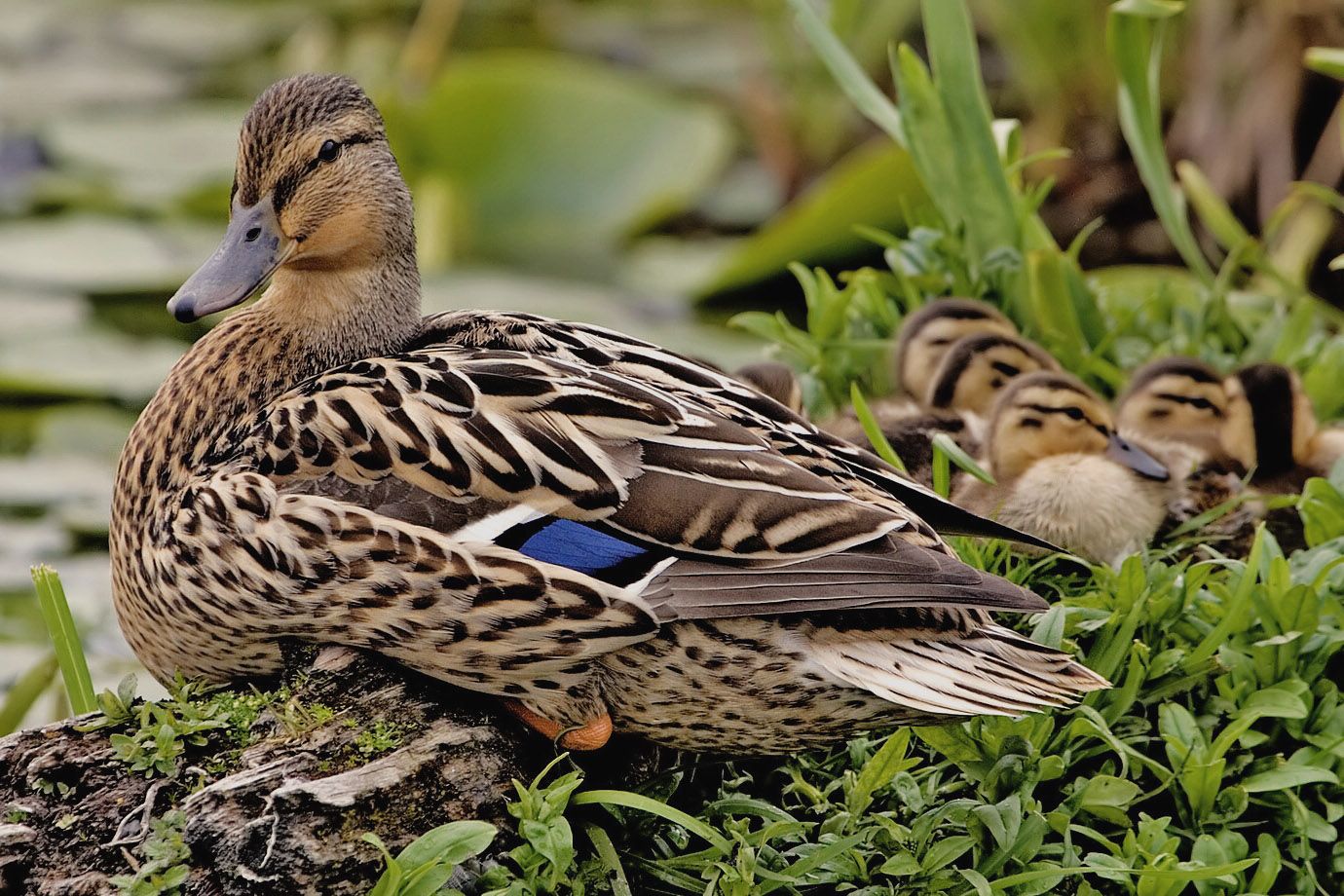
Mallard
The Mallard probably the best-known and most recognizable of all ducks, is a dabbling duck which breeds throughout the temperate and sub-tropical America, Europe, Asia, New Zealand (where it is currently the most common duck species), and Australia.
The male birds have a bright green head, while the female's is light brown. The Mallard lives in wetlands, eats water plants, and is gregarious. It is also migratory. The Mallard is the ancestor of all domestic ducks, and can interbreed with other species of genus Anas. This interbreeding is causing rarer species of ducks to become genetically diluted.
The Mallard inhabits most wetlands, including parks, small ponds and rivers, and usually feeds by dabbling for plant food or grazing; there are reports of it eating frogs. It usually nests on a river bank, but not always near water. It is highly gregarious outside of the breeding season and will form large flocks, which are known as a sord.
It is strongly migratory in the northern parts of its breeding range, and winters farther south. For example, in North America it winters south to Mexico, but also regularly strays into Central America and the Caribbean between September and May.
en.wikipedia.org/wiki/Mallard - 04.10.2010
Mallard with Chicks
Here once the mother duck with its beautiful plumage is in the focus, the cute chicks only complete the picture.







